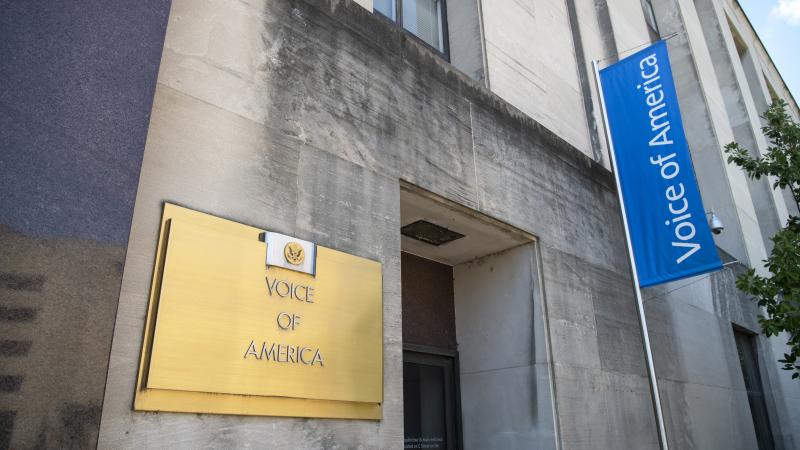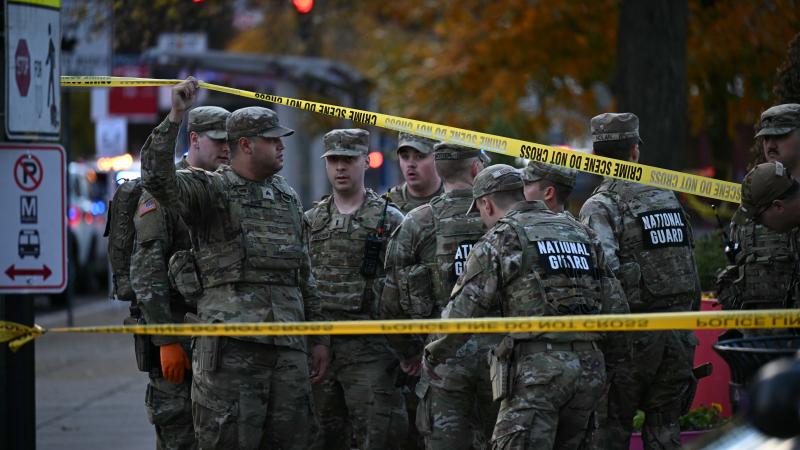Supremes to consider legality of race-based districts in possible boon to GOP redistricting effort
Democrats have gone as far as fleeing their home state to avoid voting on the issue, ironically, to deep-blue Illinois, where racial gerrymandering has favored Democrats for decades. Race-based districts also face a second prong of scrutiny from the Trump Justice Department.
The Supreme Court’s decision to scrutinize the constitutionality of race-based congressional districts under the Voting Rights Act may give Republicans a major boost in their redistricting effort ahead of the 2026 midterm elections.
The constitutionality of race-based districts, which are primarily concentrated in the southern United States as a vestige of anti-discrimination efforts during the civil rights era, are also facing challenges from the Trump Justice Department, which has prodded at least one state to reconsider its district map over constitutional concerns.
The case comes before the court as Republicans in several states, frustrated with the results of the 2020 census, are planning a rare mid-decade redistricting to carve out more friendly seats, a bid to swing the 2026 midterms decisively in the party’s favor in a chamber of Congress that has been narrowly divided in recent years.
Redrawing maps in their party's favor
States where Republicans control all three branches of government, like Texas and Florida, are currently considering options to redraw their maps ahead of the coming elections. Current plans in Texas could net the GOP an additional five seats. Other states, like Florida and Indiana, are also exploring redistricting options ahead of the midterms, which could net a handful of seats.
The coming Supreme Court consideration of a challenge to Louisiana’s district map could have wide-ranging implications for how states are required to consider the Voting Rights Act, specifically Section 2 of that law, when drawing their congressional maps.
The Voting Rights Act was passed during the Civil Rights era to combat rampant discrimination against black Americans in the South in voting laws. Section 2 prohibits race-based discrimination in state voting laws. By the 1980s, the courts applied Section 2 to the redistricting process to prevent vote dilution of minority groups, giving rise to majority-minority districts.
Louisiana was previously directed by a lower federal court to draw a map containing two majority-minority districts after its prior map was thrown out by a federal court. In the earlier map, black voters—who make up about one-third of the state’s population—only had one majority-minority congressional district.
However, that court-directed change was challenged by “non-black” residents of the state, who alleged that the redrawing violated the Fourteenth and Fifteenth Amendments to the Constitution, which grant equal protection under the law and prohibit denying the right to vote based on race or color, respectively. That challenge has now made its way to the High Court.
In a brief order last Friday, the Supreme Court ordered the two parties to submit supplemental briefs addressing whether “the State’s intentional creation of a second majority-minority congressional district violates the Fourteenth or Fifteenth Amendments to the U. S. Constitution,” signaling its willingness to consider the legal underpinnings of race-based districts across the country.
Federal "pre-approval" not required
In recent years, the Supreme Court has curtailed the previously expansive application of the Voting Rights Act. In 2013, the court struck down preclearance in Shelby County v. Holder, essentially eliminating Section 5 of the law which required certain states to seek federal approval for voting law changes. In 2021, the court made it more difficult to prove violations of Section 2 in Brnovich v. Democratic National Committee. Left-leaning Justices Breyer, Kagan and Sotomayor dissented from the opinion.
If the Supreme Court agrees with lower court rulings in the Louisiana case, Section 2 could face a similar fate. Last year, a lower federal court found the order to include a second black majority district in Louisiana was “an impermissible racial gerrymander in violation of the Equal Protection Clause of the Fourteenth Amendment.” That court called attention to the “tension between Section 2 of the Voting Rights Act and the Equal Protection Clause,” according to the written decision.
“The Voting Rights Act protects minority voters against dilution resulting from redistricting maps that ‘crack’ or ‘pack’ a large and ‘geographically compact’ minority population. On the other hand, the Equal Protection Clause applies strict scrutiny to redistricting that is grounded predominately on race,” the three-judge panel of federal judges wrote.
Historically, Southern states, like Louisiana and Alabama, have been prohibited by the courts from eliminating certain “majority-minority” districts in order to comply with Section 2 of the Voting Rights Act. They are often ordered by the courts to preserve those districts to prevent diluting minority voting power under the law. Those districts often vote reliably Democratic, giving that party an edge in those heavily Republican states, an advantage not afforded to Republicans in states like Massachusetts or Illinois.
As recently as 2023, a federal court reversed Alabama’s congressional district map, finding that it violated the VRA because it failed to account for the growing black population in the state. That court ordered that the state legislature must redraw the map and add a second minority district. That legal battle is still ongoing after the Alabama legislature refused to add a second majority-minority district.
Race-based districting the heart of the matter
At the same time the race-based districts are facing challenges from politicians, the Justice Department’s Civil Rights Division has also taken aim at a subset of those districts on constitutional grounds. That division played a major role in pushing Texas to reconsider its districts, focusing primarily on the legality of creating minority “coalition districts.”
Assistant Attorney General for the Civil Rights Division Harmeet Dhillon sent a letter to Texas Gov. Abbott and State Attorney General Ken Paxton in early July, asserting that four Texas congressional districts constitute “unconstitutional ‘coaltion districts’.” These districts, which involve creating a majority-minority district using multiple minority voting groups, for example, black and Hispanic voters, “run[s] afoul” of both the Voting Rights Act and the Constitution.
“[One] of the flavors of race-based districting that states have tried to do over the years, and tried to do because they've been forced to do by plaintiffs, minority groups, is that you can combine multiple minority groups or count on a certain white crossover group to a minority group to make what's called a coalition minority district under Section 2 of the Voting Rights Act,” Dhillon explained to the Just the News, No Noise TV show on Tuesday.
“The Fifth Circuit, which Texas is a part of, there was a recent decision in 2023 that struck down this concept of coalition districts, but left alive what is now going to be considered by the Supreme Court, a sort of majority minority district, but you have to have a single minority that composes a majority of that district,” Dhillon said.
Texas launched a mid-decade redistricting ahead of the midterms next year in response to the Justice Department’s message. Last week, state lawmakers filed a proposal for a new district map that could see Republicans gain five more seats in a future congressional delegation. Such a change would provide an important advantage for the party to retain the House of Representatives, which has remained closely divided in recent years.
Texas Democratic lawmakers fled the state in order to deny the legislature a quorum and galvanized support from Democratic governors across the country, including J.B. Pritzker of Illinois, Kathy Hochul of New York, and Gavin Newsom of California. State legislators have since voted to order the sergeant at arms to return the Democrats to the legislature under the authority of an arrest warrant.
California votes GOP 40% but Congressional representation of GOP is only 17%
Vice President JD Vance noted the numerical imbalance, saying in a social media posting that "The gerrymander in California is outrageous. Of their 52 congressional districts, 9 of them are Republican. That means 17 percent of their delegation is Republican when Republicans regularly win 40 percent of the vote in that state. How can this possibly be allowed?"
Texas Attorney General Paxton said that his office would seek judicial orders to declare that state Democrats who do not return to the legislature by the state House speaker's deadline have vacated their offices.
Though no other Republican states have officially begun a redistricting effort, Florida, Missouri and Indiana are considering fielding proposals.
If the Supreme Court favors striking down race-based districts altogether, the potential Republican targets could multiply, opening more than 10 districts across mostly Southern states for redistricting.
The Facts Inside Our Reporter's Notebook
Links
- directed by a lower federal court
- challenged by ânon-blackâ residents
- Fourteenth or Fifteenth Amendments
- Shelby County v. Holder
- Brnovich v. Democratic National Committee
- according to the written decision
- reversed Alabamaâs congressional district map
- legal battle
- sent a letter to Texas Gov. Abbott and State Attorney General Ken Paxton
- launched a mid-decade redistricting
- fled the state
- voted to order
- seek judicial orders
- Florida
- Missouri
- Indiana















